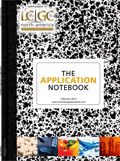Creation of a New IMS Analyzer Platform with High Resolving Power
PHOTONIS USA
Paula Holmes, PhD, and Bruce N. Laprade, PHOTONIS USA
Ion mobility spectrometry (IMS) has become widely accepted for the detection of chemical warfare agents, explosives, and narcotics as well as for pharmaceutical quality control and pesticide screening of food. Most currently available commercial IMS units have a resolving power of 10–60.
In order to minimize the frequency of false positive and false negative results that create delays and cost overruns, it has become necessary to design and construct an ion mobility spectrometer with high separation power without compromising instrument simplicity, serviceability, and cost. Such an instrument can be used in applications where high volume, accuracy, and speed of specific contaminant identifications are critical, such as those involving product safety, composition analysis, and environmental control.
PHOTONIS has designed a new IMS analyzer platform designed for simple integration with most mass spectrometers, GCs, and other analytical instruments. The new IMS analyzer unit combines PHOTONIS' patented Resistive Glass products with a novel robust ion gate technology to create an IMS analyzer which improves resolution and simplifies serviceability. This new unit provides significantly higher resolving power (64–150) when compared to most currently available IMS instruments.

Figure 1: IMS analyzer prototype.
In this new IMS analyzer platform, key components made from PHOTONIS Resistive Glass were designed to replace conventional lens assemblies. Reaction and drift regions of the ion mobility spectrometer were fabricated using Resistive Glass technology, as they enhance ion throughput and simplify construction.
Resistive Glass is manufactured in a patented process by PHOTONIS in which an electric field is created to guide or direct charged particles. It consists of alkali-doped lead silicate glass that has been reduced to make the surface a semiconductor. Resistive Glass can be used to manufacture capillary inlet tubes, drift tubes, ion guides, ion mirrors, collision cells, conversion diodes, or voltage dividers.
The use of Resistive Glass drift tubes in an IMS Analyzer provides key benefits, such as uniform electric fields with minimal radial inhomogeneities and ease of construction. In addition, the single-piece construction allows uniform flow of drift gas without the need for additional containment.
A new novel and robust ion gating assembly was also created for this IMS Analyzer. It comes equipped with a Bradbury-Nielsen type electronic gate, built using photo-etching technology. The unique approach of the ion gate design results in a device that is robust, high-performance, low cost, and simple to assemble when compared to the conventional winding technique. The ability to handle entire grid sets rather than individual wires to insure precise positioning of all wires provides a distinct advantage to traditional approaches in terms of resolution and serviceability.
The new IMS unit can be operated at room temperature but also features integral heaters that can be operated at temperatures up to 150 °C.
This new IMS Analyzer is designed to be scaled or customized to interface with a wide variety of instruments to simplify IMS analysis in applications where a narrow range of contaminants need to be quickly identified. Its unique design allows the user to quickly and inexpensively perform a simple IMS analysis and receive fast, accurate results. Its higher resolving power (64–150) lowers the probability of false positive and false negative results for a more efficient analysis.
PHOTONIS USA, Inc.
660 Main Street, Sturbridge, MA 01566
tel. (508) 347-4000, fax (508) 347-3849
Website: www.photonis.com

The Benefits of Custom Bonded Silica
April 1st 2025Not all chromatography resins are created equal. Off-the-shelf chromatography resins might not always meet the rigorous purification requirements of biopharmaceutical manufacturing. Custom bonded silica from Grace can address a wide range of separation challenges, leading to real performance improvements. Discover more about the latest innovations in chromatography silica from Grace, including VYDAC® and DAVISIL®.
5 Things to Consider When Selecting a Chromatography Silica
April 1st 2025Particularly in the pharmaceutical industry, drug purity isn’t just a goal – it’s essential for achieving safety, stability and efficacy. However, purification is easier said than done, especially with challenging molecules like DNA and RNA “oligonucleotides,” due in large part to their diversity and the range of impurities that can be generated during production. Enter DAVISIL® chromatographic silica, with a wide range of pore diameters and particle sizes to meet your specific application, performance and sustainability requirements. Before you choose the chromatography resin for your next purification application, take a look at these 5 considerations.
Automating Protein Purification: Efficiency, Yield, and Reproducibility
March 27th 2025Recent advancements in automated protein purification stress the importance of efficiency, scalability, and yield consistency. This eBook compares different purification platforms, highlighting their impact on downstream applications and demonstrating how automation enhances throughput and process control.
MilliporeSigma: Ultrapure Water for Sensitive LC-MS Analysis of Pesticides
March 25th 2025The aim of the study was to illustrate the efficiency of Milli-Q® water purification systems in eliminating pesticides from tap water, thereby producing and delivering reliable and consistent-quality ultrapure water suitable for pesticides analysis














